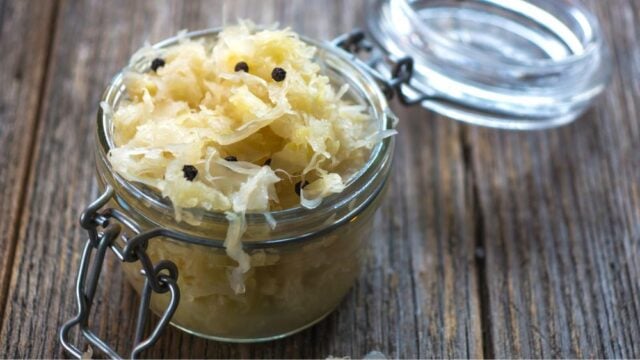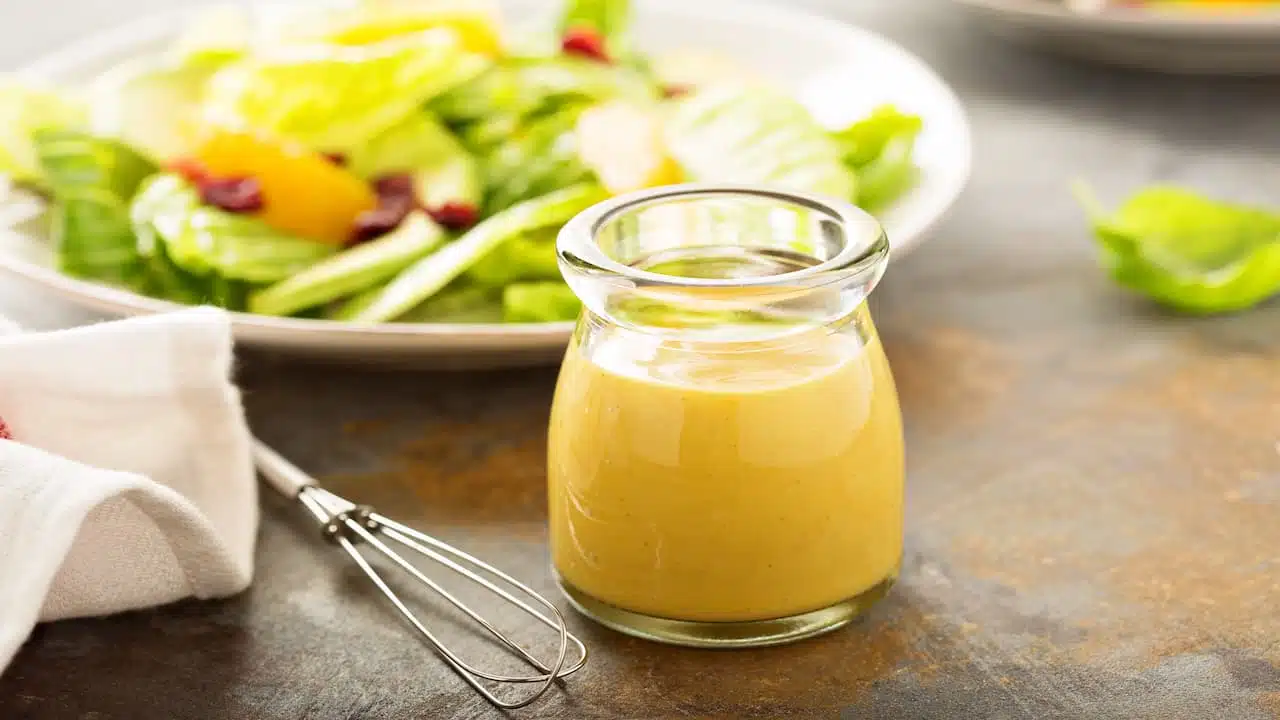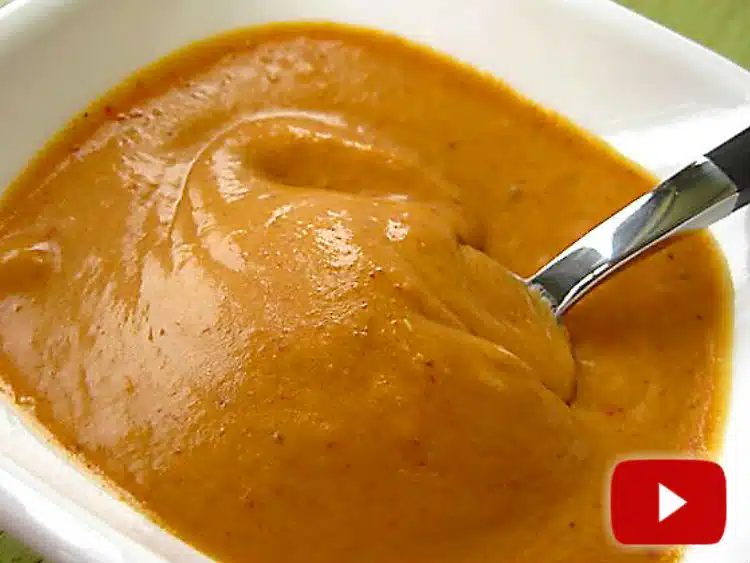Hi, Paulina Friends Kitchen! On this occasion we will enjoy a Fermented Food Archi known by German tradition: Chucrut . Who has not tried some Frankfurter with Chucrut and felt that he was traveling directly to Oktoberfest? If they did not recommend that experience deeply!
That is why in this note we are going to tell you all about this star fermented food . We will discover its essence, their versatility in the kitchen and in the end you will find a recipe of homemade chucrut to avoid falling into bad imitations.
Content table
About the Chucrut
Also known as Sauerkraut in German, which literally translates as "acid cabbage"; It is an ancestral culinary preparation that is achieved from the fermentation of white cabbage (cabbage).
The cabbage is cut in thin strips, massage with salt and let stand, allowing the magic of fermentation to do its job. During that process the sugars present in the leaves are transformed by bacteria rich in lactic acid .
Fermentation not only results in a distinctive and bittersweet flavor, but also enhances the benefits of this food. This recipe is known for being a source of probiotics, which favor intestinal health and the immune system.
The crunchy texture and the acidic flavor of homemade chucrut make it a perfect accompaniment for protein -rich dishes, such as roasted meats and sausages.
History and origin
It is believed that cabbage fermentation was practiced in ancient China more than 2,000 years ago. However, it was in the regions of Eastern Europe where this method of conservation and flavor was developed in what we know today as Chucrut .
In pre-refrigeration times, food conservation was a fundamental need. Fermentation arose as a valuable technique to preserve the surplus harvest during the winter months.
The cabbage, abundant and easy to cultivate in the cold regions of Europe, became a natural candidate to be fermented.

The German Sauerkraut
This ferment is often associated with German cuisine, where it gained popularity and became a classic accompaniment for dishes such as wine sausages and roasted meats.
This ferment is a basic food in German kitchens for centuries, and its history is woven in the country's culinary tradition. The fermentation of cabbage allowed rural communities to conserve food during the cold months of winter, and this tradition went from generation to generation.
Festivals and celebrations in Germany often have the presence of Chucrut . An iconic example is the Oktoberfest in Munich, where Chucrut accompanies the famous Frankfurter and German beers. Also in the Christmas season, it is served with roasted meat dishes.
How to do Chucrut?
The magic behind this recipe is in the simplicity of its process. After finely cutting the cabbage, it mixes with salt and massages to release its liquids.
Then, cabbage is placed in a container, pressed so that it is compact and submerged in its own liquid. It is important that the cabbage is completely soaked in its juice and covered with a weight to avoid air exposure. The fermentation process takes a few weeks to develop its characteristic flavor.
This pickle is versatile and can be customized by adding spices, herbs or even other vegetables. Preparing it is a process that combines patience and creativity.
The taste of chucrut
Its flavor is a symphony of contrasting flavors. The acidity resulting from fermentation is balanced with a slight sweetness of the cabbage, creating a combination that surprises in each bite.
The crispy texture and its versatility allow it to be incorporated into a wide variety of recipes. From salads to tacos to the shepherd and sandwiches, through meats and fish. The Chucrut adds a new dimension of flavor to each dish.
How many types of Chucrut are there?
Although sauerkraut is made of white cabbage, customization possibilities are endless. It can be experienced with different types of cabbage, such as red cabbage, or even with Brussels repollitos.
You can also add carrots, apples, to create unique combinations and experiment according to personal tastes. It can even be combined with pickles or other ferments such as Kimchi Korean .
How long does the Chucrut last?
Fermentation acts as a natural conservation process, which means that this preparation can last months in the refrigerator. As time passes, the taste will continue to develop, giving us an experience in constant evolution.
Sauerkraut a durable ally in the kitchen. Thanks to the fermentation process, this ingredient can be kept for a long time, maintaining its flavor and texture. As the months go by, the taste becomes more intense and acidic, which can be ideal for those looking for a bolder flavor profile in their dishes.
Infallible tips for preparing perfect sauerkraut
- Choice of cabbage: Choose a very fresh, good quality cabbage, and remove the leaves that may be withered.
- SALT PROPORTIONS: It is important to use the right amount of salt to favor fermentation and taste development.
- Hygiene: Maintain scrupulous hygiene throughout the process to avoid any type of pollution.
- Adequate covered: use a glass container with airtight closure and make sure the cabbage is always submerged in your juice. If necessary, add some boiled water (cold).
Now, we are ready and ready to start. I don't get more time and leave them with the recipe.
Follow on Instagram ( here )
and on YouTube that I upload new videos every week ( click here )
Homemade Chucrut Recipe
Yield: 6 portions
Preparation time: 20-30 minutes
Ingredients
- 1 cabbage (cabbage) large
- 2 tablespoons of salt
How to make Chucrut recipe step by step
- Wash the cabbage well and take out the leaves that can be brown. Cut the cabbage into very thin strips.
- In a large bowl, massage the cabbage cut with the salt to cover it completely, and let stand for 10-15 minutes, until it releases its juice.
- Place the cabbage in a glass container, pressing hard to make it compact. Make sure you are completely submerged in your juice and cover with a weight.
- Cover the container and let it ferment at room temperature for 7-14 days.
- Once the desired flavor is reached, refrigerate the chucrut in the refrigerator, to stop the fermentation process. You can incorporate pepper grains to give more flavor (optional).






